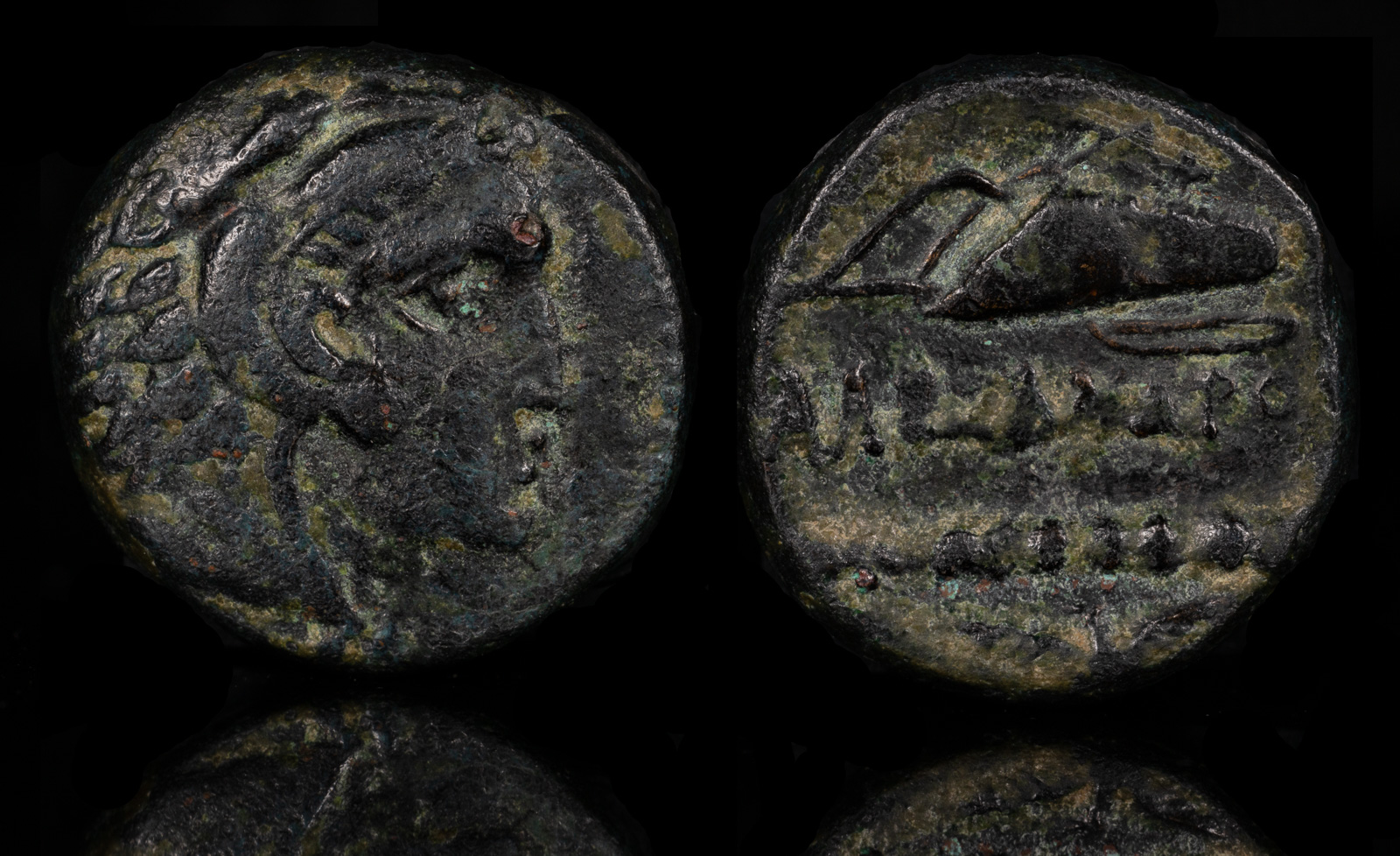
Alexander III ‘the Great’ Æ 16mm
Amathus, circa 325-323 BCE.
Head of Herakles to right, wearing lion skin headdress / Club and bow in bowcase, ΑΛΕΞΑΝΔΡΟΥ between; eagle flying to left below.
Price 3090a. 4.66g, 16mm, 3h.
Ex Roma
Amathos was one of the ancient kingdoms of Cyprus and, like the others, was extremely ancient. During those times it was famous for the second most important temple to Aphrodite and for a temple to Adonis.
Per mythology, the city was founded by one of the sons of Hercules, named Amathos. From a separate legend, Theseus brought Ariadne here after he had escaped from the labyrinth of Minos. There, she gave birth to a child and then died. A shrine was later built for her.
During ancient times, the people of Amathos were said to be Autochthonous, which means that they had always lived there (sprung from the ground). Archeological evidence points to habitation for at least 3500 years.
In roughly 1500 BCE, the city was founded by Phoenicians and remained true to their Phoenician roots, eventually becoming loyal to the Persian empire and siding with the Persians in all disputes against the other Cypriot kingdoms.
Amathos was strongly independent and resisted numerous invasions. It even resisted an attack by the Seleukids, though they were forced to give hostages.
Amathos is mentioned during the reign of Pharaoh Amasis II of Egypt.
498 BCE
Amathos remains loyal to the Persian Empire during the Ionian Revolt, a rebellion of Greek city-states in Asia Minor against Persian rule. Kition rebels.
Peace of Kallias, an agreement between Athens and Persia after a series of conflicts between them. In Cyprus, Amathos, Kelenderis, and Salamis remain under Persian control but maintains its local autonomy. Ephesos, Miletos, Priene, Klazomenai, and Phokaia also obtain some autonomy.
Androkles of Amathos sails with the Aegean fleet of Pharnabazos III and Autophradates.
Amathos under Androkles, Salamis, and Soloi in Cyprus submit to Alexander the Great after his victory over the Persian Empire at the Battle of Issos. Chios also comes under Macedon.
Androkles of Amathos, Pnytagoras of Salamis, and Pasikrates of Kourion join Alexander the Great at the Siege of Tyre, where their qinqueremes are destroyed.
The flagships of Pnytagoras of Salamis, Androkles of Amathos, and Pasikrates of Kourion are destroyed while anchored in the harbor of Tyre.
Demetrios Poliorketes captures Cyprus from Ptolemy I Soter and Menelaus – including Salamis, Kourion, Soloi, Paphos, and Amathos.
Amathos, Soloi, and Salamis become part of the Ptolemaic Kingdom of Egypt under Ptolemy I Soter. They are incorporated into the Ptolemaic administrative system, as Cyprus becomes a strategic naval and commercial hub for the Ptolemies.